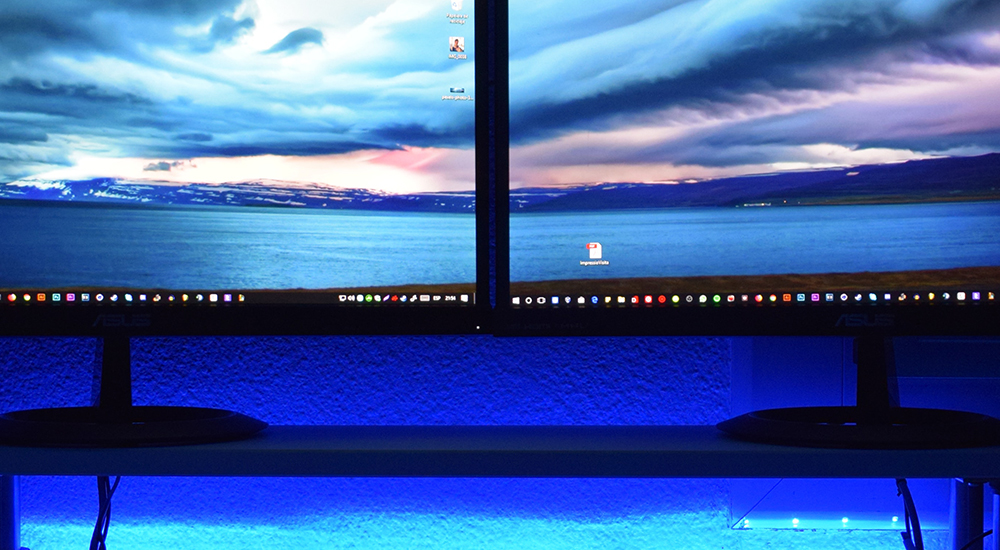Designing for Efficiency: Industrial Design’s Influence on Fqq Monitors for Work Environments
In today’s fast-paced work environments, efficiency is of paramount importance. As professionals spend long hours working on computers, the design of the tools they use plays a crucial role in enhancing productivity and well-being. One such tool that has undergone significant advancements in design is the Fqq monitor. This article explores how industrial design principles have shaped Fqq monitors, leading to enhanced efficiency and improved user experiences in work environments.
The Importance of Industrial Design in Work Environments
The industrial design focuses on creating products that are aesthetically pleasing, functional, and user-friendly. In work environments, where individuals rely heavily on technology, the impact of industrial design is particularly significant. A well-designed workspace promotes comfort, reduces fatigue, and improves overall performance. By incorporating industrial design principles, Fqq monitor manufacturers can create displays that are not only visually appealing but also optimized for efficiency and productivity.
Understanding Fqq Monitors
Fqq monitors, also known as Full Quality Quad monitors, are advanced display systems that offer high resolution, color accuracy, and extensive screen real estate. These monitors are commonly used in industries such as graphic design, video editing, and data analysis, where precise visual representation is essential. Fqq monitors provide users with the ability to multitask efficiently, compare large sets of data, and view intricate details with ease.
Factors to Consider for Efficient Fqq Monitor Design
To design Fqq monitors that maximize efficiency in work environments, several factors need to be considered:
Ergonomics
Ergonomics plays a vital role in reducing strain and promoting user comfort. Adjustable stands, tilt and swivel options, and height adjustments allow users to find the most comfortable viewing position, reducing the risk of musculoskeletal disorders and eye fatigue.
Display Size and Resolution
Fqq monitors are available in various sizes and resolutions. Larger displays with high resolutions offer more screen real estate and sharper images, enabling users to view multiple windows simultaneously and work on complex tasks with greater ease.
Connectivity Options
Efficient Fqq monitors should offer a range of connectivity options, including HDMI, DisplayPort, and USB ports. These connections allow users to connect their monitors to different devices, such as laptops and desktop computers, without the need for additional adapters.
Adjustability and Flexibility
The ability to adjust various display settings, such as brightness, contrast, and color calibration, is crucial for achieving optimal image quality. Additionally, features like split-screen functionality and picture-in-picture mode enhance multitasking capabilities, allowing users to work on multiple projects simultaneously.
Eye Care Features
Extended screen time can strain the eyes. Fqq monitors with eye care features, such as blue light filters and flicker-free technology, help reduce eye fatigue and minimize the risk of eye-related issues, ensuring a comfortable and productive work environment.
Energy Efficiency
As sustainability becomes increasingly important, energy-efficient Fqq monitors are gaining popularity. These monitors utilize technologies like LED backlighting and power-saving modes to minimize energy consumption, reducing the environmental impact and operating costs.
How Industrial Design Enhances Efficiency in Fqq Monitors
Industrial design principles contribute significantly to the efficiency of Fqq monitors. Here are some ways in which industrial design enhances the user experience and productivity:
Streamlined Aesthetics
Industrial designers focus on creating visually appealing products that seamlessly blend into work environments. Sleek and modern designs reduce visual clutter, promote a sense of professionalism, and create a positive workspace ambiance.
Intuitive User Interface
Efficient Fqq monitors incorporate user-friendly interfaces that are easy to navigate. Intuitive menus, shortcut keys, and on-screen display options make it effortless for users to adjust settings and customize their display preferences, eliminating unnecessary time spent on configuration.
Optimized Display Placement
Industrial design takes into account optimal display placement for enhanced ergonomics and reduced eye strain. Positioning the monitor at eye level and minimizing glare from external light sources improve viewing comfort and readability, allowing users to focus on their work for extended periods.
Cable Management Solutions
Cable clutter can hinder productivity and create an untidy workspace. The industrial design addresses this issue by incorporating cable management solutions such as built-in cable routing and hidden compartments, ensuring a clean and organized setup.
Customization Options
Different professionals have unique requirements when it comes to displaying preferences. Industrial design allows for customization options like adjustable color profiles, aspect ratios, and on-screen grids, empowering users to personalize their Fqq monitors to suit their specific work needs.
Integrated Productivity Tools
The industrial design integrates productivity-enhancing features directly into Fqq monitors. These may include built-in calibration tools, color accuracy enhancements, and software that facilitates efficient multitasking. Such integrated tools streamline workflows and reduce the need for external devices or software.
Conclusion
Industrial design is instrumental in designing Fqq monitors that prioritize efficiency and productivity in work environments. By considering factors such as ergonomics, display size and resolution, connectivity options, adjustability, eye care features, and energy efficiency, manufacturers can create Fqq monitors that not only meet the needs of professionals but also contribute to a comfortable and engaging work experience.

Recent Comments